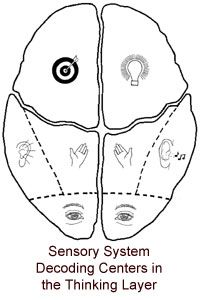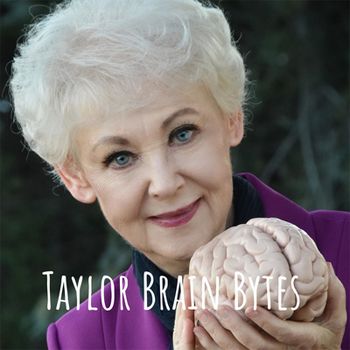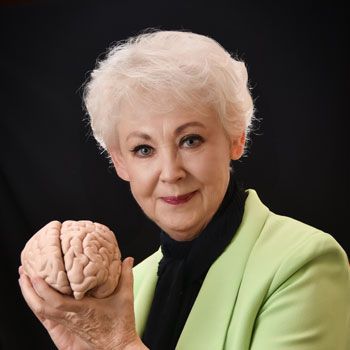Sensory Systems and Music
©Arlene R. Taylor PhD
Usually by the age of 5 or 6 (and sometimes much earlier, as often seems to be the case with kinesthetics), children begin to exhibit a preferred sensory system. That is, the type of sensory data that tends to register most quickly and intensely in one’s brain, often referred to as one’s sensory preference. The preference may be present at birth but in those early years the brain is learning at a fast pace, using all the sensory systems in an intense way that is rarely seen in adulthood. In some cases, the sensory preference may be exhibited by the child but not observed or picked up on by the parents and teachers.
Human beings tend to feel most comfortable, affirmed, understood, nurtured, and even loved when they receive sensory stimuli in their preferred sensory system. Naturally they tend to gravitate toward, and feel most comfortable in, environments that acknowledge and reward their sensory preference. The ideal is to know one's sensory preference and to build sufficient skills in all three systems so one can access any or all by choice, as required by the situation at hand.
A few people, perhaps 1 of every 100,000 individuals exhibit a human neurological phenomenon where there is a blending/coordinating of the senses in an unusual manner. This phenomenon known as synesthesia is more heightened in highly creative people and is associated with incredible powers of memory (perhaps due to multiple associations within the brain). Sometimes referred to as color hearing, synesthesia results when the senses become crossed and musical sound is shadowed by a colorful, formless, visual imagery, where sounds are subjectively perceived as sight (e.g., an individual may hear colors and see or taste sounds).
The five main senses are often grouped into three categories and referred to as the visual, auditory, and kinesthetic sensory systems. Large sample studies suggest that perhaps 60% of the population has a visual preference. Approximately 20% has an auditory preference and 20% has a kinesthetic preference. There are also sensory differences based on gender.
Visual Preference - 60% | Auditory Preference - 20% | Kinesthetic Preference - 20% |
| More males than females when tallied by gender Who is best at taking data in through sight?
| More females than males when tallied by gender Who is best at taking data in through sound?
| Equal females and males when tallied by gender Who is best at taking data in via taste, touch, smell, and body position?
|
Decoding of Sensory Data
Decoding centers for the sensory systems are located in six of the eight lobes of the cerebrum, three in each hemisphere. They can receive and process up to 10 million bits of data per second: • The two occipital lobes (related to sight) • The two temporal lobes (related to sound) • The two parietal lobes (related to kinesthesia) Based on individual sensory preference, you may approach the study of music quite differently from others, and may find specific musical activities easier or more challenging to accomplish. |  |
Visual Preference
 The two occipital lobes interpret data related to sight. Approximately 60% of the population (more males than females) has a visual preference. This sensory system helps you recognize the signs and symbols that represent musical sounds (reading music).
The two occipital lobes interpret data related to sight. Approximately 60% of the population (more males than females) has a visual preference. This sensory system helps you recognize the signs and symbols that represent musical sounds (reading music).
The occipital lobes are active when decoding visual data and during visual imaging. In combination with the frontal cortex, it enables you to maintain the image of an instrument in consciousness. Individuals with a visual preference may be inclined to memorize music by mentally seeing the notes on the page or by noticing musical patterns on the keyboard. They may find it easier to notate music legibly.
Kinesthetic Preference
 The two parietal lobes interpret data related to taste, touch, position sense, physical stimuli, and odors. In combination with the frontal cortex these portions of the brain enable you to hold onto position sense (e.g., the way in which you hold a musical instrument, maintain your position on the piano or organ bench). These neurons fire when decoding kinesthetic data and during movement imagery.
The two parietal lobes interpret data related to taste, touch, position sense, physical stimuli, and odors. In combination with the frontal cortex these portions of the brain enable you to hold onto position sense (e.g., the way in which you hold a musical instrument, maintain your position on the piano or organ bench). These neurons fire when decoding kinesthetic data and during movement imagery.
This sensory system also helps you to decode vibrations that beat against the skin and/or that are felt in the limbic system. Perhaps that was what Keats had in mind when he wrote, heard melodies are sweet but those unheard are sweeter. Incidentally, odors can trigger memories faster than any other type of sensory data. The nose is one synapse away from the amygdalae in the emotional brain that routes incoming sensory information to higher centers of association in the thinking brain.
Approximately 20% of the population has a kinesthetic preference. This system helps you manage your relative position to bounded shapes such as instruments, and to sense nuances of sound, including vibrations, and perhaps musical interpretation.
Individuals with a kinesthetic preference may gravitate toward tactile memorization (sensing positions of fingers, hands, and body, and how it feels to reproduce the music). They may use musculature to represent the music, modeling important features of musical patterns by means of physical memories (e.g., tap toes, “dance it out” from head to toe).
Auditory Preference
 The two temporal lobes interpret data related to sounds that are heard. Approximately 20% of the population (more females than males) has an auditory preference. This system facilitates emphasis on tone color, pitch, and dynamics. It fires when decoding sounds and during auditory imaging. In combination with your frontal cortex it allows you to decode patterns of vibrations, and enables you to sustain musical anticipations for several seconds as you await their resolution.
The two temporal lobes interpret data related to sounds that are heard. Approximately 20% of the population (more females than males) has an auditory preference. This system facilitates emphasis on tone color, pitch, and dynamics. It fires when decoding sounds and during auditory imaging. In combination with your frontal cortex it allows you to decode patterns of vibrations, and enables you to sustain musical anticipations for several seconds as you await their resolution.
Individuals with an auditory preference may tend to memorize by recalling the sound of the music, the intervals between notes, volume-of-sound differences, and the distinctive tones typical of the key signature(s). They may hum along with the music, or use the body as a resonator for the music, allowing himself/herself to be played as an instrument, as it were.




